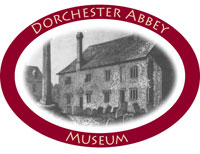Dorchester-on-Thames
DORCHESTER EXCAVATION SEASON 2014

We have had a fantastic season in 2013, and the weather was better than we could have hoped for. You can see a 360-degree panorama of the excavation produced by the Institute’s photographer Ian Cartwright here. You can also read about us on the past pages of our Excavation blog. This upcoming season the project will continue in the Village Allotments, led by Paul Booth. We will be pursuing the story of earlier phases of Roman life within the town walls and trying to put the late 1st/2nd century features and material from last season into context by looking at the eastern side of the trench in more detail. We will explore the construction of the Roman road, try to identify roadside activities, and plumb the depths of the probable early-mid Roman well we discovered last season.
If you would like to learn more about how you can join the excavation at Dorchester, please email Assistant Director Ed Peveler (edward.peveler@arch.ox.ac.uk).
If you live in the village and would like to have a test pit in your garden or a survey of your fields, please contact Dr Wendy Morrison (wendy.morrison@arch.ox.ac.uk).
History of the Dorchester Excavation
In 2007 Oxford Archaeology, the University of Oxford and the people of Dorchester-on-Thames came together in the first of what is planned to be many years of joint research and archaeological training.
Dorchester is a key site in British history. It was a prestigious ceremonial centre in the Neolithic and Bronze Age, and is highly unusual in having important Iron Age, Roman and Anglo-Saxon towns in a single place which has suffered remarkably little damage from development.
Investigations at Dorchester will give us a better understanding of three of the key transition points in English history: the move away from tribal society with the growth of urbanisation in the late Iron Age, subsequent incorporation into the Roman Empire, and the rise of early Medieval society from the confused situation arising from the withdrawal of the Roman legions in AD 410.

Since 2007, beginning in the Minchin Recreation Ground, and in the Village Allotments in subsequent years, we have been investigation the Post Roman and Later Roman archaeology of the town. In 2014, we will be going deeper, and perhaps uncovering the earlier Roman origins of such a significant place.
Funding bodies:
 |
 |
 |

